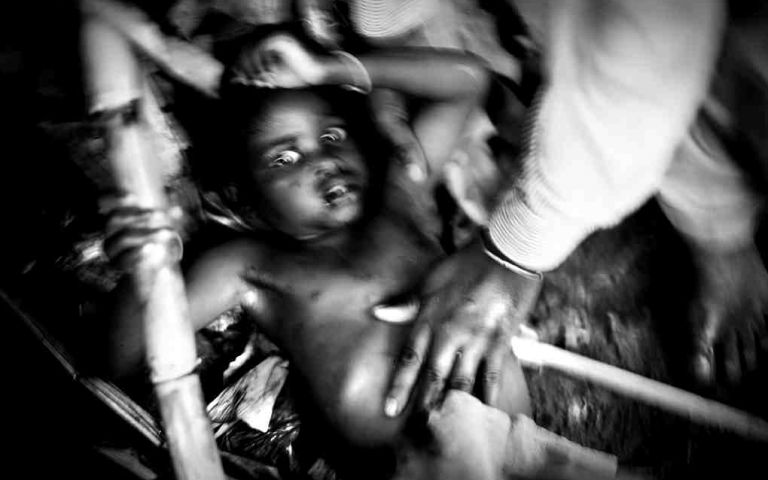


Some so-called ‘witchdoctors’ and ‘traditional’ healers continue to torture and kill children in a number of countries. Governments of those countries, and the Human Rights Council itself, need to pay attention and act, humanists have told the United Nations rights body.

“Searing images capture a disturbing Ugandan trend — the recent rise of charlatan priests and the child abuse and sometimes murder that have resulted. ” (Photo: Pulitzer Center, Child Sacrifice in Uganda project)
Humanists International has intervened at the Human Rights Council to highlight the continuing plight of children who are mutilated or “sacrificed” in the mistaken — and horrific — belief that their death or the use of their body parts will enable magical rites or ‘traditional medicine’. The statement also highlights the related practice of accusing children of being “witches”.
The need to criticize and open up “harmful traditional practices” is a theme within the advocacy work of Humanists International, which promotes a rational and human rights-based approach to public policy. ‘Traditional practices’ are sometimes protected, or enforcement of laws against them is neglected, by states where there are strong taboos against criticizing inherited beliefs, even when those practices are clearly harmful to individuals and violate their basic human rights.
Humanists International calls for better public education and better enforcement of laws which would limit the practice of victimizing children.
The full statement follows below:
40th Session of the UN Human Rights Council (25th February – 22nd March 2019)
General Debate on Item 4A few days ago, archaeologists working in Peru found evidence of the ritual sacrifice of around 140 children, which occurred in 1450. Scientists suggest the Chimu civilization sacrificed the children in response to catastrophic weather.1
To most, the finding represents abhorrent acts from a time when people had little understanding of science, relying instead on superstition.
Yet, child sacrifice continues today.
In Uganda children disappear frequently, murdered or mutilated by witch doctors as part of ceremonial rituals supposed to bring “luck” to those who pay.2
In Nigeria, some evangelical preachers encourage people to believe children are witches. Abuse, abandonment and murder can follow.3
In South Africa, some traditional healers use the body parts of sacrificed children as ingredients in their “medicines.”4
Child sacrifice rituals can involve the cutting or removal of body parts, faces or genitals. These brutal acts are frequently done whilst the child is still alive since there is a belief that the screams of a victim being attacked enhance the power of the body parts, as does the innocence of the victim.5
Despite laws against child sacrifice, poor implementation, lack of education and an absence of clear principles and priorities for the elimination of the horrific practice mean that there are many children who still suffer.
The practice of child sacrifice works in diametric opposition to all understandings of human rights and our obligations to some of the most vulnerable in society. Not enough is being done. This Council, in tandem with affected countries, has an obligation to combat it.
Page banner: “Twin boys Itohowo and Kufre stand surrounded by angry villagers who believe they are bringing evil to their lives”
(Photo: Robin Hammond, Observer)
As a registered charity and NGO, we rely on the donations we receive from our members and supporters to help us campaign on humanist issues and lobby for humanist values at international institutions (including the United Nations). If you support our aims, please consider giving a one-off or regular gift today. Thank you.